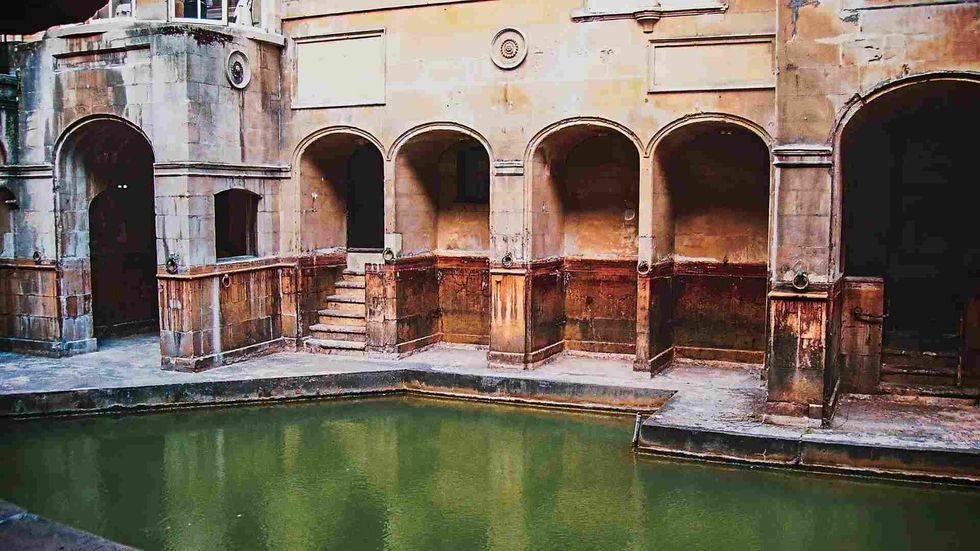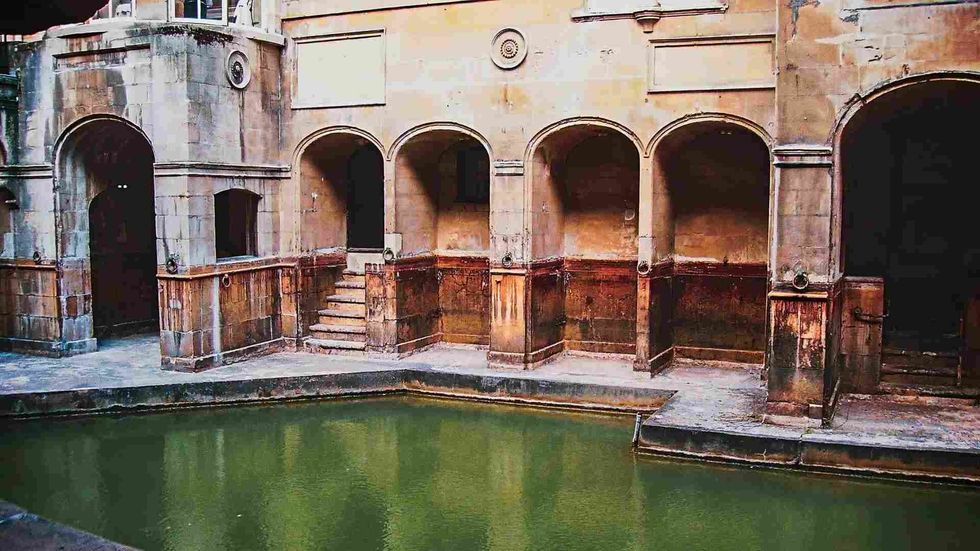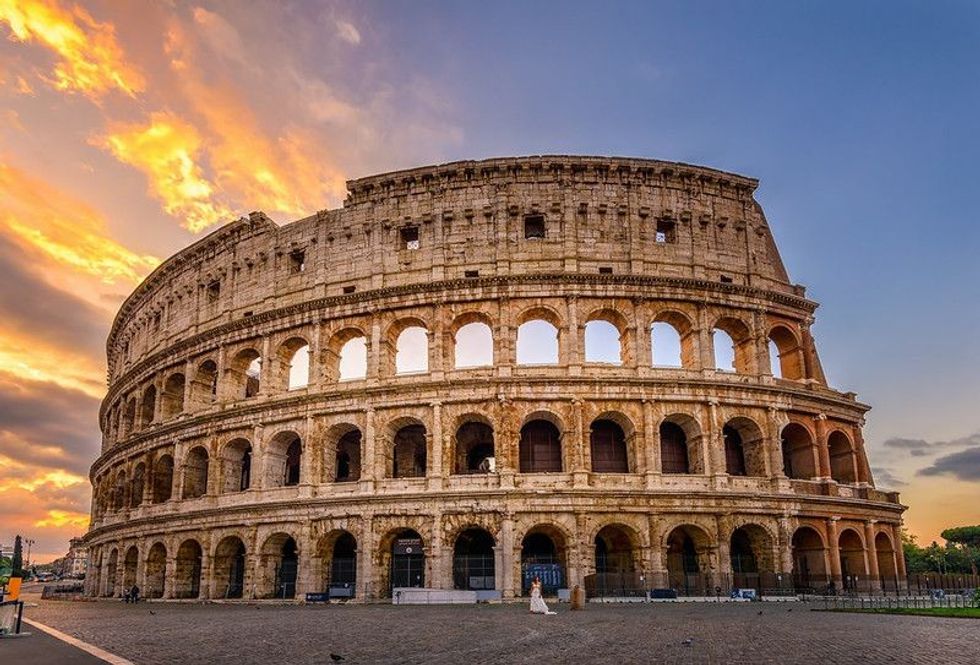Bathing was such an important aspect of Roman society and it has taken for granted that there is so much written about it.
Skilled slaves built Roman bath houses to strict specifications on time and on budget. These baths, however, fell into disuse around 410 AD when the Romans began to retreat from Britain in order to focus on defending Rome against barbarians.
Bathing was viewed by the Romans as both a social activity and a means of keeping clean. The Romans adored bath houses, and they were at the heart of much of Ancient Roman social life.
There were no regulations concerning nudity and both men and women used the same baths in the early days of Ancient Roman baths, nor were there any laws about what individuals did while they were naked.
There were dedicated baths for ladies who had issues with this setup. However, public uproar against promiscuity in Roman baths finally prompted Emperor Hadrian to segregate the sexes.
Baths were first heated by natural hot water springs or braziers, but by the first century BC, baths had more complex heating methods such as under-floor (hypocaust) heating powered by wood-burning furnaces. Thermae, from the Greek word 'thermos', meaning,'hot' and 'balneae' from the Greek word 'balaneion', meaning 'bath' were bathing facilities in Ancient Rome.
The term 'thermae' typically refers to vast imperial bath complexes, whereas 'balneae' alludes to the smaller-scale public baths or private baths found throughout Rome.
Baths were so important to the Romans that a construction inventory from 354 AD listed 952 baths with many pools of various sizes across the city. In Khenchela, the everyday custom of public washing is still very much alive.
If you enjoyed reading these Roman bath houses facts, you may find it interesting to learn about the black eye galaxy and digestion facts here on Kidadl.
The History Of Roman Bath Houses
Roman baths were a typical feature of large cities across the Roman empire and were built for bathing and relaxation. Baths included a wide range of chambers with varying temperatures, as well as a swimming pool and reading, relaxing, and socializing areas.
Baths were devoted to the goddess Sulis, whom the Romans associated with goddess Minerva, according to archaeological evidence. The springs were dedicated to the goddess Sulis, whom the Romans identified with goddess Minerva.
The first spring was found by the pre-Roman British monarch Bladud, who erected baths there, according to Geoffrey of Monmouth's mainly mythical 'Historia Regum Britanniae'.
Early in the 18th century, Geoffrey's minor tale was elevated to prominence as a royal endorsement of the spring's virtues, with the addition that wallowing in the warm mud healed Bladud and his herd of pigs of leprosy. It was believed that the warm mud had healing powers.
The Romans polished the experience and made the method more efficient and hygienic, despite the fact that the notion of bathing rooms originated from Ancient Greece. Baths were originally established in Ancient Rome in the early third century BC, and by the early second century AD, there were over 856 of them.
The word 'terme' in Italian means 'hot springs', but baths were used for more than just cleaning. They were considered as a social gathering place where people gathered to talk politics, gossip, and people watch.
Baths expanded in size as they became more popular.
Some of the largest baths were set out in gardens with gymnasiums, and libraries. Baths were typically visited in the afternoon as a calming practice that had been ingrained in the daily lives of the Romans.
The Romans elevated Greek bath culture to a great bath tradition. A customer could roam around, sampling each cold, hot room, tepid, or steam bath.
Their bath houses were masterpieces of art. Roman baths became a popular source of recreation and amusement, evolving into a way of life that lasted until Christian philosophy took hold and condemned Roman bathing as decadent.
Reasons For Building Roman Bath Houses
The idea was to create areas of the utmost purity, where cleansing the body and purifying the soul went hand in hand.
The sequence in which the Romans bathed was entirely up to them, as they did not have to visit the rooms in a specific order. The afternoon, on the other hand, normally began with visitors going to changing rooms, getting out of their everyday attire.
The richer people had slaves to look after their possessions, but if you were a normal person, you could hire an attendant to watch over your possessions.
They would then be massaged with scented oil and sent to the workout area.
However it was a mild workout, only enough to shed a light sweat. Following that, the person might switch rooms, starting with a warm room, moving to a warm bath, and eventually to the cold room used for refreshing.
Roman baths were ornately designed, with separate areas for males and females. While there is great controversy about whether the baths were either combined or separated, evidence suggests that certain baths permitted males and females should go in the morning and afternoon, respectively.
The water tank was built by the Romans to transport fresh water from lakes and rivers to Roman towns. Water levels and aqueducts were continually checked by Roman engineers to ensure that the city and baths had enough water.
They even had sewage systems and underground pipes.
The wealthy had access to running water in their dwellings. A grand pump room was a structure or room in a spa where guests were able to drink water from a mineral spring.
A public sanitation system with water piped in and out was used in Roman public baths. Slaves filled clay buckets and they were used to fill baths at home, which were usually barely big enough to sit up in.
Baths were built for both military and civilian use throughout the Roman Empire. Many were grandiose with large colonnades, colorful decorative mosaics, and swimming pools with varying water temperatures.
Facilities Of Roman Bath Houses
Mirrors covered the walls,the high ceilings were buried in glass, the pools were lined in exquisite marble, and the second floor was covered in intricate mosaics.
A natural spring provided the bath's water in certain sites, such as Bath in Somerset. Water was piped in or delivered to smaller towns by an aqueduct in other areas.
The water was heated using a hypocaust system, which was a central heating system similar to the ones used by the Romans in their dwellings.
A changing room, a tepidarium (a sweating chamber and warm-water bathing hall), caldarium (hot-water bathing hall), laconicum (super hot bath hall), frigidarium (cold bath-water bathing hall), a huge open hall, and an open-topped rotunda were all standard features in most baths.
The Romans circulated warm air around the baths. The baths were supplied with water via subterranean pipe networks.
Theatrical and musical acts were held on stages. Exercise and sports competitions were held at nearby venues.
The floor of bath houses was paved with marble mosaics. Trees, birds, and other pastoral themes were commonly painted on the stucco walls. Interior domes were decorated with sky-blue paint, gold stars, and heavenly images.
The inside and outside were both embellished with statues and fountains. Baths were built by the Romans in their colonies as well, making use of a natural hot spring in Europe to build baths in Bath and Buxton in England, Aix-en-Provence and Vichy in France, Baden in Austria, and Aquincum in Hungary.
In Roman settlements, these baths were hubs for recreational and social activity.
Some spa complexes included libraries, lecture halls, gymnasiums, and formal gardens. The Romans also employed hot thermal waters to treat rheumatism, arthritis, overeating, and drinking.
As a result, the Romans elevated bathing to a great bath art form, and their bath houses reflected this. The Roman bath, for example, consisted of significantly more than a basic immersion or sweating exercise.
Undressing, bathing, sweating, having a massage, and relaxing were all components of the bathing process that required different chambers, which they designed to serve those purposes in the Roman bath.
The addition of diversions not directly connected to bathing, as well as sex segregation, had a direct influence on the structure and style of bath houses. The sophisticated Roman bathing routine and the architecture that resulted served as models for later bathing facilities in Europe and America.
Uses Of Roman Bath Houses
Baths were primarily used by the Romans to clean themselves. The Romans that lived in the city attempted to visit the baths at least once a day to clean. They would clean themselves by rubbing oil on their skin and scraping it off with a strigil, a metal scraper.
Bath houses were also a gathering spot. Friends gathered at the baths to chat and eat. Men occasionally assembled for business or to talk politics.
Private baths were occasionally seen within the residences of the wealthy. They had to pay the government for the quantity of water they used, so they could be extremely costly.
Even if wealthy people had their own bath, they would most likely go to the public bath to relax and socialize, and they visited the public bath in order to meet new individuals.
Here at Kidadl, we have carefully created lots of interesting family-friendly facts for everyone to enjoy! If you liked learning these Roman bath houses facts, then why not take a look at Apollo Roman God facts or facts about the Roman Pantheon.








